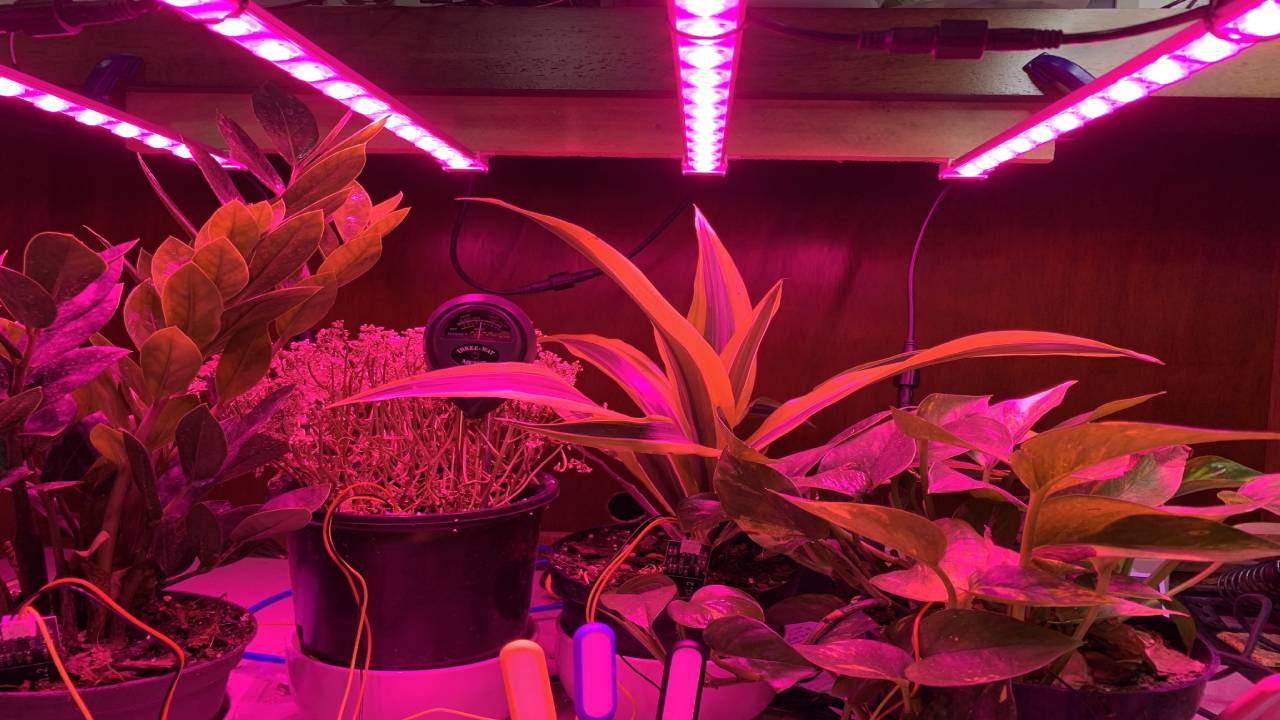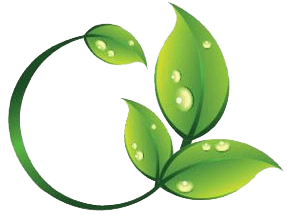Become enlightened as to who LED the way....!
LED lighting for indoor plant growth has advanced a lot in recent years for both accuracy and energy efficiency

As grow-lighting technology forges relentlessly onward, it’s impossible to make an honest claim to be leading the way. Even the scientists and engineers at the sharp end of LED lighting development tend to be narrowly focussed on a single product type at any one time. They can only be leaders in their own arena. It is maybe more realistic to accept that LED technology itself is leading the way, drawing us onward to a future of immense potential.
When it first became possible to use LED lighting for growing plants, the equipment available was expensive, and tended to be aimed at a target market of large commercial growers or relatively wealthy, technology-enthusiast growers. Early LED grow lighting had its problems too, with over-emphasis on the blue and red light resulting in a purplish light output with insufficient mid-spectrum wavelengths. While it is still possible to find highly priced, specialised LED lighting products, increasingly the LED horticultural lighting market is becoming dominated by products with broader appeal and more reasonable prices. Most growers prefer to find LED equivalents to the HID and fluorescent lighting that they’re accustomed to using. It’s natural that we don’t want to alter our familiar growing methods, we just want to find the best light for the job.
The fast-developing LED grow light market is now most active in substitution, as people renewing their lighting kit consider options which might save on energy or offer fresh advantages. Growers who have up to now used dual-spec HPS Lamps may be tempted to swap them for full-spectrum LED bar fixtures, which will do the same job with less heat output, lower energy use, and a more even spread of light. People who propagated under bulky, fragile cool CFL lamps might nowadays use a lighter, more robust LED bar grow-light, or a plate-format LED with a spectrum including enhanced blues.
Full spectrum plate LEDs may appeal to growers with smaller tents or might be used as supplementary lighting by bigger growers. And of course, TLED grow lights are an obvious replacement for T5 fluorescent tube lights.
But there are also LED lights available now which can make successful growing easier than it has been. For example, with HID lighting, it can be advantageous to tune the light spectrum to the plant’s life cycle. A grower might opt for a metal halide lamp during the vegetative (growth) stage of his crop, benefitting from the increased UV and blue light in its spectrum. At (or just before) the flowering stage he would switch to an HPS lamp to make use of greater light intensity for flowering and fruiting. Full-spectrum LED lighting fixtures now on the market have a higher light output and better efficiency than HID lights and emit PAR wavelengths and intensities of light suited to any stage of the plant life cycle, removing the need to switch from one lamp to another.
Supplementary LED lighting is also becoming available which is very simple to use, and which can add UV and far-red wavelengths of light to either full PAR spectrum LED lighting or to non-LED lighting set-ups. Such lighting must be applied sparingly, for reasons described below. These supplementary lights are usually powered and controlled independently of the main full-spectrum lighting and timed to light for no more than a couple of hours each day, often near the end of the photoperiod. However, they are easy to set up, and purchase and running costs are very low.
The grower must exercise caution – too much UV light can be harmful to plants, and too much far-red light can produce unwanted effects.
Natural sunlight contains three kinds of UV light;
- UVA (wavelengths 315 nm – 400nm)
- UVB (wavelengths 280 nm – 315 nm)
- UVC (wavelengths < 280 nm)
Most UVC light emitted by the Sun does not reach the Earth’s surface, because it is filtered out by the Ozone in the atmosphere. This relatively short-wavelength light has more energy than UVB and UVA and the greatest potential to do damage to both animal and plant life on earth.
UVB light can also be damaging to plants, as it can disrupt the bonds between atoms. Only around 10% of UVB light emitted by the sun penetrates the ozone layer to reach the Earth’s surface. UVB also cannot pass through glass. UVB is both beneficial and potentially harmful to animal life – it stimulates production of Vitamin D, but too much exposure can lead to skin cancer.
UVA light is the least damaging form of UV light for plants, and around 50% of the UVA emitted by the Sun reaches the Earth’s surface.
Grow lights don’t emit significant amounts of UVC light because it has no beneficial effect upon plants. However, there are UVC light-wands available, intended for use as grow-room sanitising tools which kill off microorganisms. With sufficient exposure, UVC light can extinguish any form of life.
UVA and UVB light are known to be beneficial to plants if exposure is limited. While over-exposure can cause harm, short periods of exposure at moderate levels encourage the plant to synthesise its own protection against UV, in the form of terpenes (essential oils) and flavonoids (pigments). These protective substances in turn improve the flavour and colour of the crop.
Far-red is light from a band of the spectrum ranging from the longer wavelengths of visible red light into the shorter wavelengths of infrared.
Plants use pigments called phytochromes to sense the proportion of red light to far-red light that they receive. Phytochromes perform various functions within the plant, including genetic controls, germination and seedling development, chlorophyll synthesis, shade avoidance and adjustment to varying light levels, and photoperiodism (the flowering response).
There are 2 kinds of phytochromes, Pr and Pfr, which convert back and forth from one kind to the other dependent upon the light received by the plant:
- Pr – responds to red light by converting to Pfr
- Pfr – responds to far-red light by converting to Pr
When plants receive far-red light, the ratio of Pr to Pfr in the plant becomes higher, and vice versa. Plants with an increased ratio of Pr to Pfr tend to react as if they are not receiving a full day’s complement of light. The implications of this depend upon the stage the plant is at in its life cycle.
Seeds need sunlight to germinate and grow. If exposed to too much far-red light, seeds might not germinate, and growth will be stunted.
In the vegetative (growth) stage, too much far red will stimulate the plant to seek more sunlight. It will grow tall, thin, and leggy, with enlarged leaves. The plant will be weakened.
At the flowering stage, extra far-red light received increases the ratio of Pr to Pfr within the plant. The plant reacts as if the day is shortened, and the night is longer. If the plant is a short-day (late summer) flowerer, this increase will stimulate flowering. For long-day (spring) flowering plants, the effect is reversed – less far-red light will stimulate flowering.

